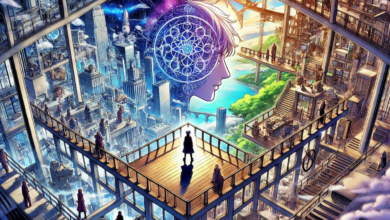The Vital Role of the Back Casting Room in Entertainment and Manufacturing

The concept of the back casting room might evoke diverse images depending on the industry discussed—film and television or manufacturing. Both uses are pivotal to their respective fields, enhancing production quality, efficiency, and innovation. This comprehensive exploration delves into how back casting rooms operate in these sectors, their significance, and the technological advancements shaping their future.
The Back Casting Room in Entertainment
Definition and Purpose
In the entertainment industry, a back casting room is a specialized space for crucial casting decisions, particularly for selecting extras or background actors for films and TV shows. It is designed to evaluate actors’ performances in a controlled, distraction-free environment, allowing casting directors to assess suitability for roles precisely.
Functions and Workflow
The back casting room is essential for various tasks such as holding auditions, conducting callbacks, fitting costumes and makeup, and coordinating numerous actors’ logistics. Casting directors use this space to hold detailed assessments, including chemistry tests between actors, which are crucial for determining on-screen dynamics.
Technological Enhancements
Recent advancements have transformed how these rooms operate. High-quality recording equipment and soundproofing are standard, ensuring auditions are captured. Furthermore, virtual casting options and AI integration are becoming more prevalent, allowing remote auditions and data-driven insights into actor suitability.
The Back Casting Room in Manufacturing
Definition and Significance
In manufacturing, the back casting room refers to a production area where materials like metal, resin, or plaster are cast into molds to create precise and detailed components. These components are utilized in a diverse array of industries, such as aerospace, automotive, and consumer electronics.
Process and Techniques
The process in a manufacturing back casting room involves several key steps: creating the mold, selecting appropriate materials, pouring them into the mold, and then allowing them to set. This method is celebrated for its ability to replicate intricate details essential for high-quality manufacturing outputs.
Material Diversity and Application
The choice of material—ranging from metals for structural components to resins for artistic creations—highlights the versatility of back casting. Durability, flexibility, and aesthetic appeal are factors in selecting each material. Back casting is preferred for industrial components and creative products like film props or art installations.
Common Challenges and Best Practices
Challenges in Entertainment
The main challenges in the entertainment-based back casting room include maintaining a high level of organization amidst the chaos of casting numerous actors and ensuring all technical equipment functions seamlessly during auditions. Privacy and confidentiality are also paramount, especially when high-profile projects are involved.
Challenges in Manufacturing
In manufacturing, the primary challenges revolve around the technical expertise required to execute the casting process flawlessly. Material waste and the need for precise temperature control are significant concerns, as any deviation can lead to product defects.
Best Practices
For both sectors, maintaining a clean and organized workspace is critical. In entertainment, using advanced scheduling and database software aids in managing large numbers of actors. In manufacturing, precise control over environmental conditions is imperative to evaluate humidity and temperature to achieve the desired quality in cast products.
The Future of Back Casting Rooms
Innovations Leading the Way
Thanks to ongoing technological innovations, the future of backcasting rooms in both fields looks promising. In entertainment, the integration of virtual reality could revolutionize audition processes by allowing actors to immerse themselves in digital sets. In manufacturing, advancements in 3D printing and materials science are set to enhance the capabilities and efficiency of backcasting techniques.
Sustainability and Efficiency
As both industries evolve, a significant focus is being placed on sustainability. In manufacturing, this means developing eco-friendly materials and recycling waste products. In entertainment, digital advancements reduce the necessity for physical travel, reducing the carbon footprint associated with traditional casting processes.
Conclusion
Whether in the bustling studios of Hollywood or the precision-driven manufacturing floors, the back casting room remains a cornerstone of creative and industrial success. By comprehending and capitalizing on the distinctive characteristics of these environments, industries can continue to innovate and excel. The ongoing integration of technology and emphasis on sustainable practices promise to keep the back casting room at the forefront of industry advancements, making it an exciting area of continued growth and development.
FAQS
What is a back casting room and how does its role differ between entertainment and manufacturing?
A back casting room in entertainment is used for casting background actors and holding auditions, while in manufacturing, it’s a production area for creating precise components using molds and casting materials.
How has technology transformed back casting rooms in recent years?
Advancements such as virtual casting, AI analysis, and high-quality audio-visual equipment have modernized entertainment casting rooms. At the same time, manufacturing has benefited from improved materials, 3D printing, and precision temperature control systems.
What are the common challenges faced in entertainment-related back casting rooms?
Key challenges include managing large numbers of actors, maintaining confidentiality for high-profile projects, and ensuring technical equipment functions smoothly during recordings or auditions.
Why is material selection important in manufacturing back casting rooms?
The choice of material—like metal, resin, or plaster—affects the final product’s durability, flexibility, and aesthetics, making material selection crucial for functional industrial parts and creative applications like film props.
What does the future hold for back casting rooms in both industries?
The future involves deeper integration of technology—virtual reality in entertainment casting and advanced eco-friendly materials in manufacturing—focused on improving efficiency, reducing environmental impact, and enhancing production quality.
You May Also Read: Pearl Villasario: Rising Star in Entertainment and Social Media




